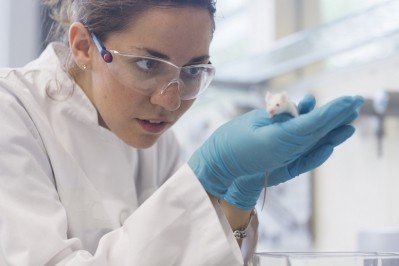Fresh calls for ban on ‘forever chemicals’ in food packaging

BEUC represents national consumer organisations across Europe. Its new compilation report highlights the issue of per- and polyfluoroalkyl substances (PFAS) in a host of consumer products that require water, grease, and stain resistance properties including paper and cardboard food packaging such as takeaway containers, popcorn bags and pizza boxes.
PFAS are a group of synthetic chemicals that persist in nature, earning them the label ‘forever chemicals’. Scientists have linked PFAS exposures to a range of health issues, including reproductive and developmental problems, liver and kidney damage, immune system dysfunction, thyroid disorders, and increased cancer risks.
“Among the chemicals found by our members are some that may cause cancer, birth defects, and reproductive harm – or that persist indefinitely in nature and accumulate in food chains,” BEUC wrote in the new report. “Sadly, a significant portion of consumer exposure to these chemicals could be prevented, as they are found in only some but not all of the tested products, indicating that alternatives are available.”
In 2017, BEUC members found high levels of fluorinated compounds in one-third of 65 tested fast-food packaging. A 2018 test showed similar results, with fluorinated compounds detected in more than 25% of the tested samples. Some of the compounds detected by BEUC members were considered to be of “very high concern”, such as PFOA, a chemical that can damage fertility and harm the unborn child.
PFAS regulation is currently being reviewed
Despite their widespread use and despite recent restrictions on single use plastic items in the EU and UK, no detailed EU rules exist for paper and board food packaging. Therefore, BEUC complains that the use and safety of these compounds remains essentially unregulated in practice. Several sub-groups of PFAS are regulated at the European level via the EU chemical regulation REACH.
But with over 4,500 chemicals in the PFAS family, there are frustrations from campaigners that industry can easily replace regulated PFAS with other PFAS chemicals.
In 2020, the European Commission’s Chemicals strategy included the phasing out of all PFAS in all non-essential uses. The same year, EFSA set new safety an updated risk assessment on PFAS in food in 2020 set a new safety threshold for the main perfluoroalkyl substances, or PFAS, that accumulate in the body.
In February this year, the EU Chemical Agency (ECHA) revealed proposals, led by Denmark, Germany, Netherlands, Norway and Sweden, for EU wide restrictions of all PFAS to come into force in 2025.
The ECHA warned that PFAs are very persistent in the environment, adding that if their releases are not minimised, people, plants and animals will be increasingly exposed, and without a restriction, such levels will be reached that have negative effects on people’s health and the environment. The authorities estimate that around 4.4 million tonnes of PFASs would end up in the environment over the next 30 years unless action is taken.
A consultation on the proposals is ongoing and subject to change. BEUC supports a ban on ‘forever chemicals’ and is calling on call on the EU to proceed as fast as possible with this restriction.
The organisation has called on the EU to update its flagship chemicals law REACH so that authorities are able to take early and precautionary action before the use of a potentially harmful chemical becomes widespread.
BEUC claims that given their persistence and potential health risks, it is crucial to strengthen regulations and take decisive action to mitigate the widespread use and potential harm associated with PFAS in consumer products.
Monique Goyens, BEUC Director General, said: “From dawn to dusk, consumers are exposed to a cocktail of chemicals that are known or suspected to be harmful. Research by consumer organisations across Europe underlines the scale of the problem. Lawmakers must act now to deliver a toxic-free life for consumers. This includes speeding up the process by which authorities can take harmful chemicals off the market.”
As well as demanding a phasing out of all harmful chemicals from consumer products, BEUC is also calling for better enforcement of existing legislation in the market, and for strengthened import controls to prevent the sale of products that may pose risks to consumer health and/or contain substances already banned in the EU.
The world’s first database to map studies on plastic chemical exposure and health
Meanwhile, a team of scientists at Australia’s Minderoo Foundation have separately created a world-first database that maps more than 3,500 studies dating back to the 1960s on plastic chemical exposure and human health impacts.
The Plastic Health Map database focuses on PFAS and was drawn up by the foundation’s chemistry, data and health experts who screened more than 100,000 individual scientific papers from multiple scientific journals.
The foundation says that of more than 1,500 chemicals mapped, less than 30% have been investigated for human health impacts and that many human health outcomes have not been investigated for any given chemicals class. Very few studies, meanwhile, have been conducted in low-income countries where populations may be heavily exposed to plastic waste.
Marcus Gover, Director (Plastics) of Minderoo Foundation said: “The researchers recommend a precautionary approach to chemical regulation, with continued health monitoring on new and existing plastic chemicals to ensure human health is protected.”
Louise Goodes, Plastic Health Map Project Lead at Minderoo Foundation, said the aim was to build a greater understanding of this emerging issue and inform regulation changes.
“The map includes studies from the 1960s onwards because this was when large-scale production and plastic pollution began to increase significantly, making human exposure to plastic materials and their degradation products inevitable.
“Given the enormous quantity of plastic materials currently in use, as well as the fact that we were unable to determine whether many of the plastic chemicals in use globally had actually been measured in living humans and evaluated for possible health impacts, we identified an urgent need to systematically map existing research.”






















